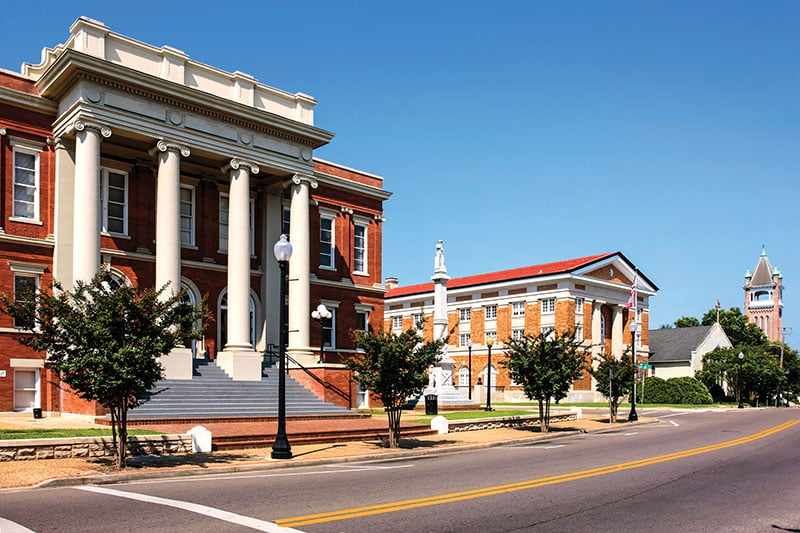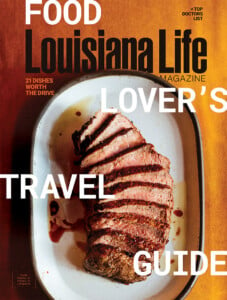Freedom Summer
The history of Mississippi’s move toward equality

Sixty years ago this month, hundreds of African Americans supported by pastors and the Council of Federated Organizations (COFO) entered the Forrest County Courthouse in Hattiesburg to register to vote. Later that summer of 1964 the protest evolved into the Freedom Summer project aimed at both exposing Mississippi’s oppression of black people and pushing for their equal rights.
The COFO established “Freedom Schools,” where mostly 1,000 white Northern college students learned how to register Mississippi’s African American voters when visiting the state, as well as teaching them civics and “Negro history” not taught in the state’s segregated public schools. In Hattiesburg’s Freedom School, the summer saw 90 out-of-state residents visit with 3,000 local participants. It was the largest Freedom Summer site in Mississippi with Hattiesburg’s event labeled “the Mecca of the Freedom School World.”
When three civil rights workers went missing while visiting a burned African American church in Philadelphia, Mississippi, safety fears of the Freedom Summer’s volunteers intensified. But the event went ahead and approximately 17,000 black residents of Mississippi attempted to vote that summer, but only 1,600 were accepted by registrars.
Freedom Summer was one of the last major interracial efforts of the Civil Rights Movement, and the event may have fueled the passage of the Voting Rights Act of 1965.

Coming Full Circle
One of Hattiesburg’s Civil Rights leaders was Vernon F. Dahmer Sr., who ran a family-owned grocery store. He was twice elected president of the local NACCP chapter and led voter registration drives. He was killed on Jan. 10, 1966, defending his home against members of the KKK.
His legacy, as well as the events of Freedom Summer, are memorialized in Hattiesburg’s Freedom Summer Trail, a driving and audio tour. Visitors may download the map from hburgfreedomtrail.org and click on each stop on the website for an audio history. Some of the stops on the trail include the Vernon F. Dahmer Sr. statue in front of the Forrest County Courthouse where locals waited in the rain in January 1964 to register to vote and continue to picket there for suffrage; the Mt. Zion Baptist Church, where the Rev. Dr. Martin Luther King Jr. spoke two weeks before his death; and St. Paul United Methodist Church that was once a Freedom School.
A Lucky Expansion
Visit The Lucky Rabbit in Hattiesburg if you love perusing antiques and collectibles, but as they say in those retro TV infomercials, “But wait, there’s more!”
Brandon and Abby Thaxton opened the two-story venue featuring dozens of vintage vendors selling eclectic finds in 2013, but they also recreate movie sets, such as the living room of “Stranger Things,” and offer items such as a 1970s McDonald’s Hamburger Jail and a Volkswagen Bus from the 1960s as popular backdrops for selfies.
This year, the business expanded by 24,000 extra square feet of retail space when the couple purchased the historic Hattiesburg Grocery building next door, so there’s even more fun to be had.
The Lucky Rabbit has become so popular, it’s been featured on HGTV’s “Hometown” and was recently noted as a 2023 top travel destination stop by Forbes. The store is open Saturdays and Sundays but every first Saturday features a street market with outdoor vendors, children’s activities and food.

Photo Courtesy: Hattiesburg Alliance for Public Art
Got Art?
When the pandemic reared its ugly head, the Hattiesburg Alliance for Public Art, a program of Visit Hattiesburg, decided to offer art installations to visitors that didn’t require public contact or a mask. They started the Hattiesburg Public Art Trail, offering 100 murals, painted utility boxes and sculptures throughout town with signage, a brochure and website. The Trail includes the statue of Vernon F. Dahmer Sr.
This year, after partnering with the Mississippi Rising Coalition, the Alliance for Public Art unveiled “The Family,” a mural celebrating the life of Oseola McCarty who achieved national recognition after donating her lifetime savings as a laundress to establish a scholarship at The University of Southern Mississippi. The mural, created by local artists Ricardo Moody, Willie L. Cooks III and Sidea Cooks may be seen at the Oseola McCarty Youth Development Center.
For a map of all public art stops in Hattiesburg, visit HAPA’s Facebook and Instagram pages or HBURGArt.com.
